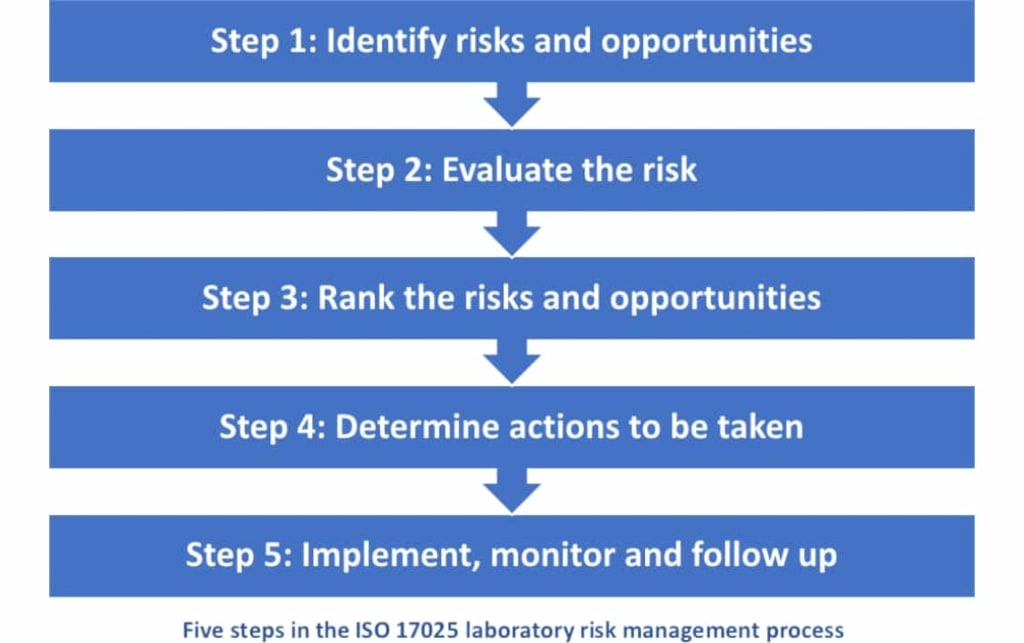Measurement Risk and Decision Rules in the Context of ISO 17025
Context of ISO 17025

Measurement risk and decision rules within the framework of ISO 17025 play a crucial role in maintaining the credibility and reliability of measurement results in calibration and testing laboratories. As we delve deeper into these concepts, it becomes evident that achieving an appropriate balance between minimizing false accept and false reject risks is pivotal for the accuracy and integrity of conformity statements.
The concept of measurement risk emphasizes the inherent uncertainty that surrounds any measurement process. This uncertainty can stem from various sources, such as equipment limitations, environmental conditions, or human factors. ISO 17025 recognizes the importance of quantifying this uncertainty, and laboratories are required to provide an expanded measurement uncertainty value along with their measurement results. This expanded uncertainty, typically expressed at a 95% confidence level, represents a range within which the true value of the measured quantity is likely to lie.
Decision rules, on the other hand, are the tools used to make sense of measurement results within the context of conformity statements. They guide laboratories on how to interpret measurements, especially when the measured values are close to the acceptance limits. These rules are essential for managing the risks associated with declaring a product or system as conforming or non-conforming based on measurement data.
The presentation has outlined various decision rule approaches, each with its advantages and disadvantages. The conservative approach, for instance, prioritizes minimizing false accept risks. Still, it might lead to higher false reject risks, which means that some products or systems that should pass may fail, potentially causing unnecessary cost and inconvenience.
Conditional pass/fail rules acknowledge the existence of measurement risk but can introduce complexity in decision-making. The introduction of guard bands offers a controlled way to reduce false accept risk while maintaining a certain level of false reject risk, offering a balanced approach.
The Gerund Zones approach, which combines the concept of guard bands with conditional pass/fail zones, allows for a more nuanced handling of measurement results. Laboratories can define these zones based on their specific tolerance for risk, ensuring that decision-making aligns with their quality objectives.
The choice of decision rule should be influenced by the laboratory's specific context and the impact of incorrect conformity statements on the overall process. For example, in critical applications where safety is paramount, a conservative approach might be favored. In contrast, in less critical situations, a more flexible approach that balances false accept and false reject risks might be appropriate.
Furthermore, ISO 17025 also recognizes the importance of continuous improvement. Laboratories are encouraged to regularly review and refine their decision rules based on historical data and performance evaluations. This ensures that the chosen approach remains effective in managing measurement risk and aligns with the laboratory's evolving needs.
In conclusion, measurement risk and decision rules are integral components of ISO 17025, providing a systematic framework for managing uncertainty and ensuring the reliability of conformity statements in calibration and testing laboratories. Striking the right balance between minimizing false accept and false reject risks is crucial for maintaining the credibility of measurement results and ultimately contributes to the quality and safety of products and systems in various industries. Laboratories should carefully consider their specific context and objectives when selecting and implementing decision rules, with a commitment to continuous improvement to enhance the accuracy and integrity of their measurement processes. The measurement uncertainty leads to false accept and false reject risks when making conformity statements based on measurement results. Accurate measurement uncertainty estimation is crucial. Decision rules define how to handle results within risk zones, and different rules offer varying trade-offs between false accept and false reject risks.
For more detailed information, please refer to International Monetary Accreditation Cooperation (ILAC) Guideline G8 and the EURAMET guide. Thank you for your attention.
About the Creator
Enjoyed the story? Support the Creator.
Subscribe for free to receive all their stories in your feed. You could also pledge your support or give them a one-off tip, letting them know you appreciate their work.





Comments
There are no comments for this story
Be the first to respond and start the conversation.